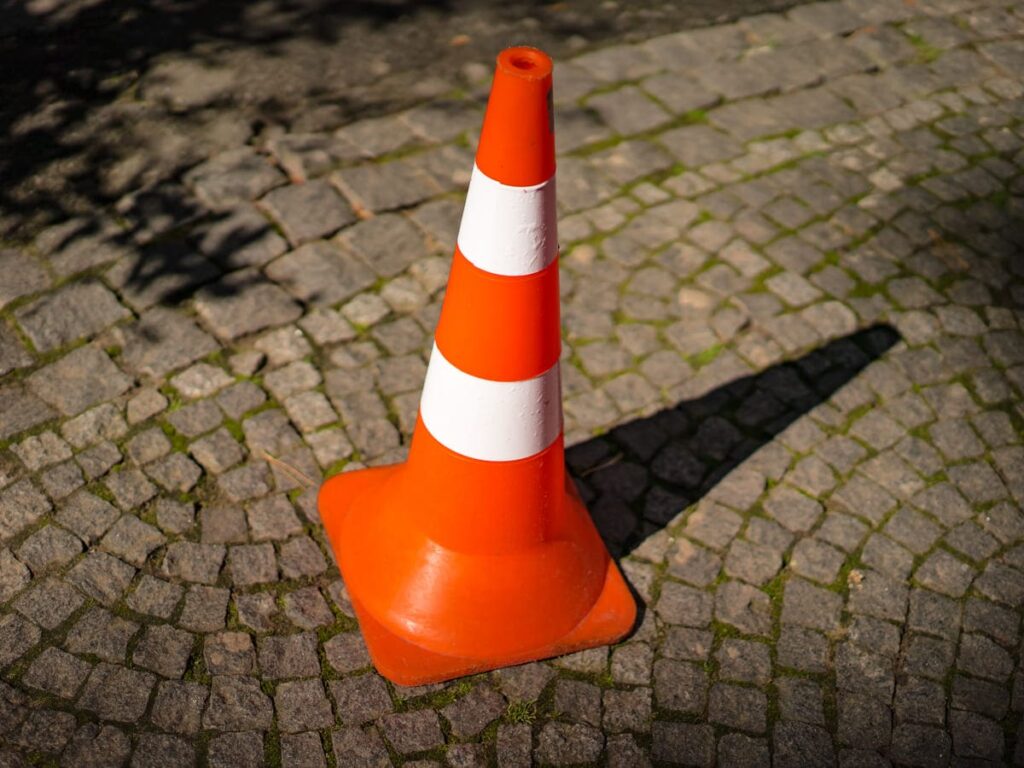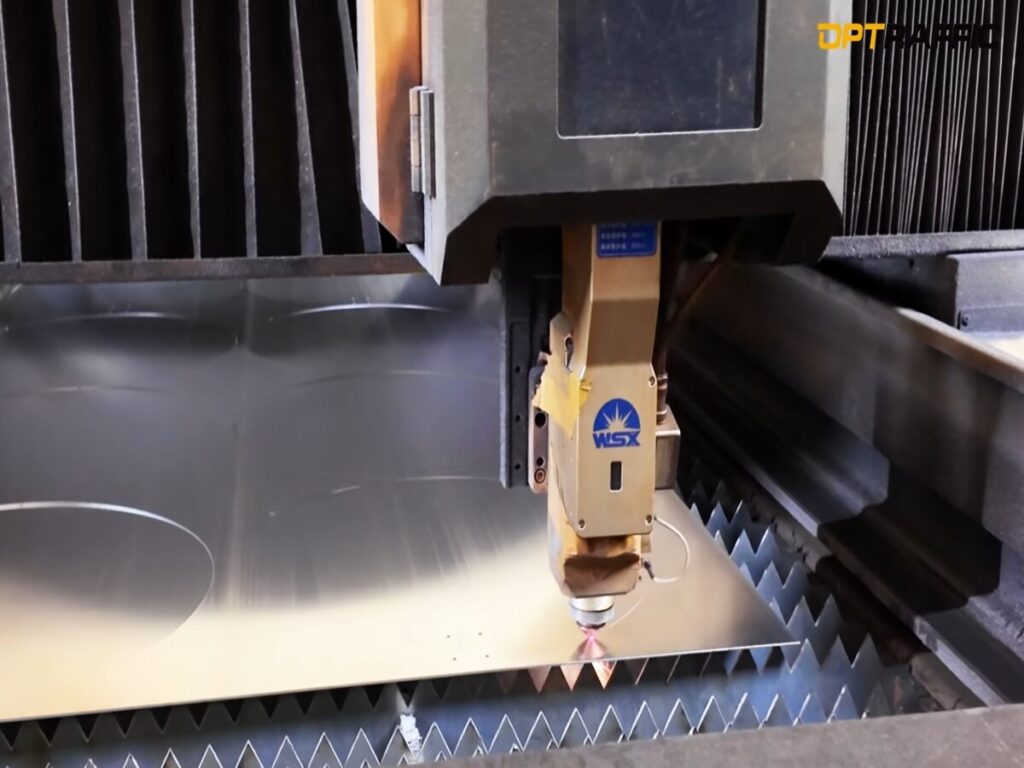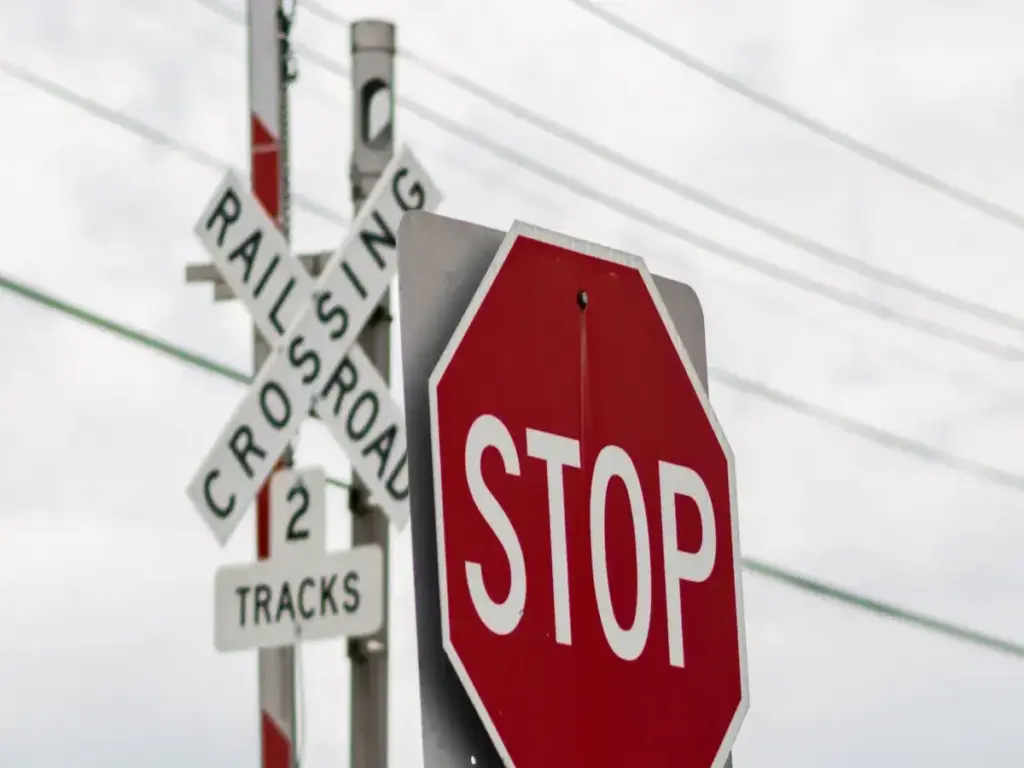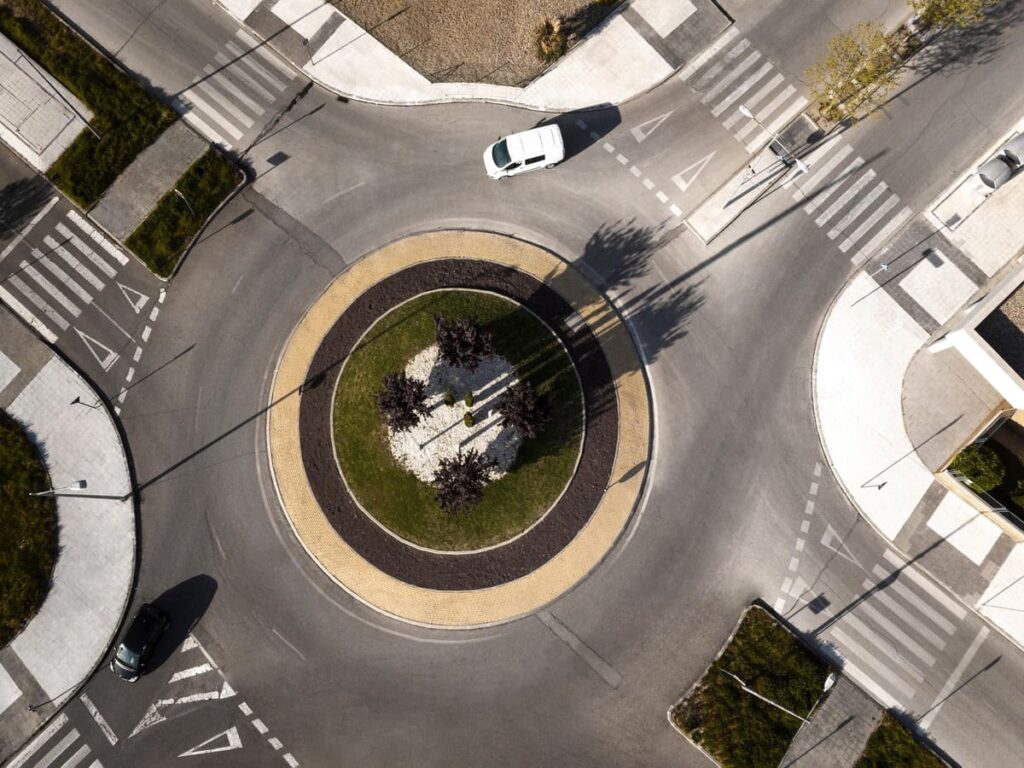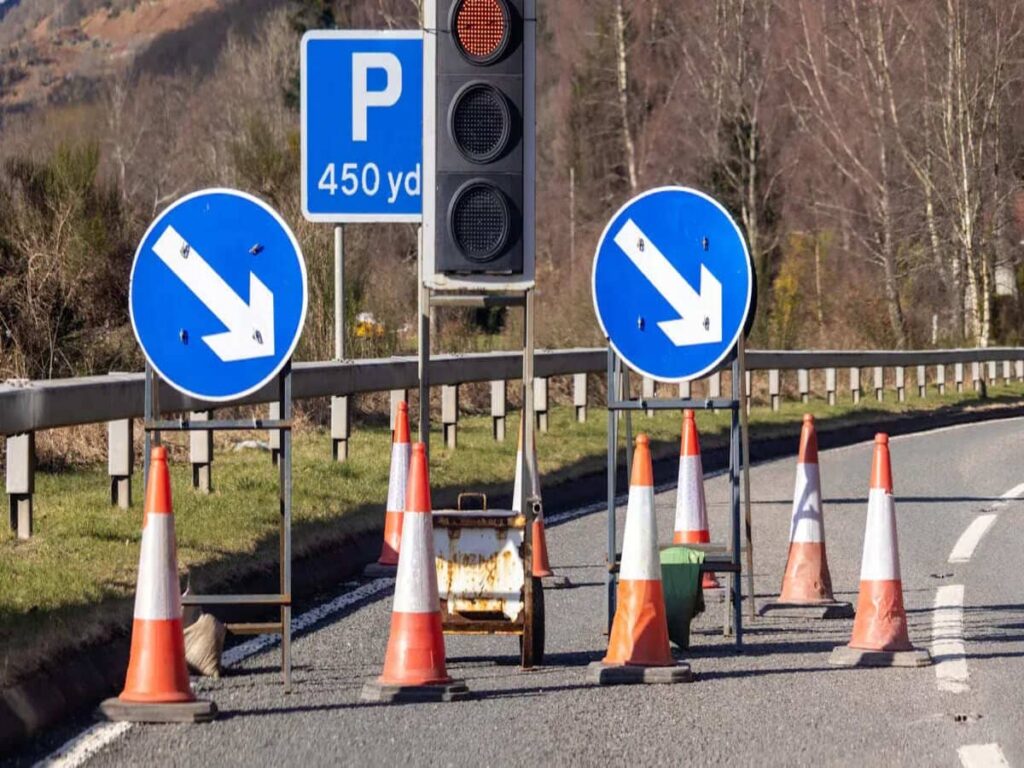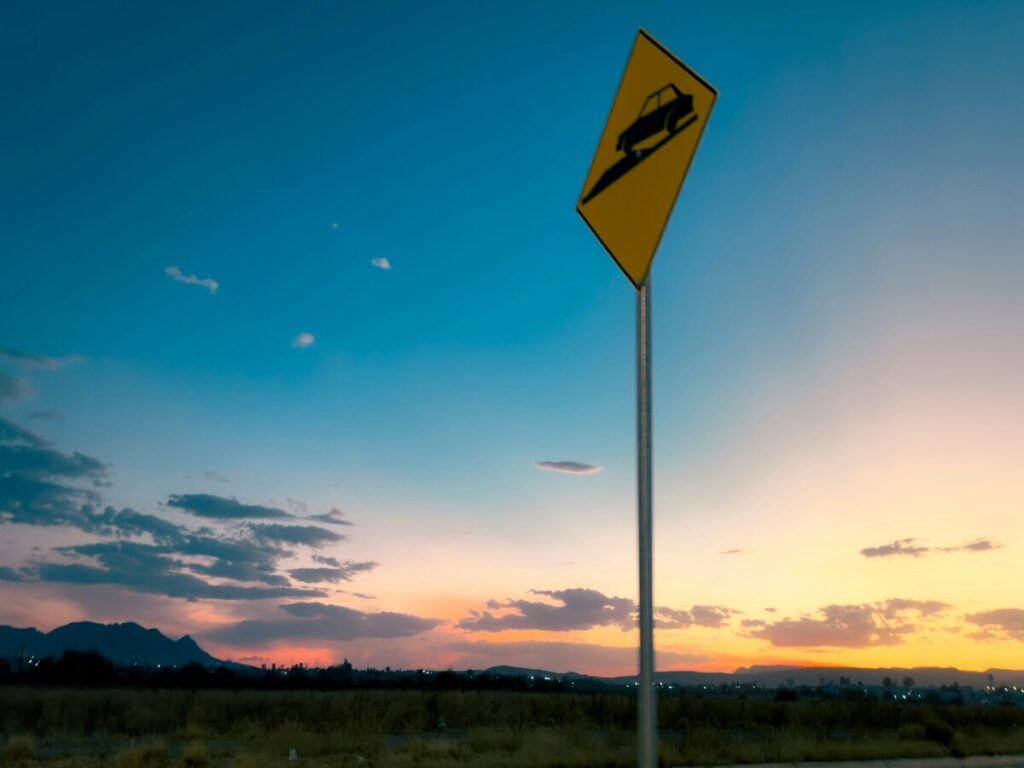
ACM es el mejor material para señales de alta visibilidad. El material que elija afecta la longevidad de las señales así como su visibilidad., Lo cual es crucial para la seguridad y el cumplimiento de las regulaciones.. Muchos expertos en señalización recomiendan ACM debido a su rendimiento superior.. Aunque todavía se utilizan carteles de plástico en determinadas zonas, Tanto el ACM como el plástico son materiales comunes para las señales de tráfico.. Sin embargo, Las señales ACM ofrecen mayor visibilidad. Quienes buscan señales de tráfico a la venta suelen elegir ACM porque la visibilidad clara es primordial.
En Optraffic, Entendemos la importancia de la visibilidad y durabilidad en la señalización de tráfico.. Por eso ofrecemos una gama de alta calidad. letreros de tráfico a la venta diseñado para cumplir con los más altos estándares de seguridad y rendimiento. Explore nuestra selección hoy para asegurarse de que su señalización se destaque y siga siendo efectiva en los años venideros..
Visibilidad
Rendimiento a la luz del día
Es muy importante qué tan bien se puede ver una señal durante el día.. El material que elijas cambia el tiempo que el letrero mantiene su color y su claridad al sol.. ACM es bueno para no decolorarse ni dañarse con el clima.. dibond, que es un tipo de ACM, Mantiene su color y forma durante cinco a diez años., incluso afuera en condiciones climáticas adversas. Esto convierte a ACM en una buena opción para señales que deben durar mucho tiempo en exteriores..
Señales de plastico como Coroplast son ligeros y baratos. Pero estos carteles pierden su color y se descomponen más rápido con el sol.. Los signos de Coroplast comienzan a desvanecerse y desgastarse mucho antes que los signos de ACM. Sintra Board es otro tipo de cartel de plástico.. Dura más que Coroplast pero no mantiene su color tan bien como ACM.. Si desea que un letrero permanezca brillante y fácil de ver durante mucho tiempo, ACM es mejor que el plástico.
Nota: Si agrega una capa de brillo UV a las señales de tráfico ACM a la venta, pueden soportar la luz del sol aún mejor y permanecer brillantes durante muchos años.
Reflectividad nocturna
Es muy importante que las señales de tráfico se vean de noche.. Tanto los letreros de ACM como los de plástico pueden tener vinilo reflectante agregado para ayudar a los conductores a verlos en la oscuridad.. El tipo de lámina reflectante colocada en el letrero ayuda a las personas a verlo mejor por la noche..
| Tipo de material | Descripción | Disponibilidad de vinilo reflectante | Rendimiento de visibilidad en condiciones de poca luz/noche |
|---|---|---|---|
| ACM (Compuesto de aluminio) | Fuerte, departamento, y no se oxida si se raya; dura bien al aire libre | puede tener 3Recubrimientos de vinilo reflectante M™ | Muy bueno para ser visto de noche.; El vinilo reflectante ProGlow es extra brillante y claro., visto desde muy lejos |
| Plástico (CLORURO DE POLIVINILO, Polietileno, Cor-X) | Plástico resistente; algunos son flexibles, algunos son rígidos; se puede colocar de diferentes maneras | Puede tener revestimientos de vinilo reflectante 3M™ | 3El vinilo reflectante estándar M™ es bueno para ver con poca luz.; El vinilo reflectante ProGlow es el más brillante y se puede ver desde lejos. |
Las señales de tráfico deben seguir reglas estrictas sobre qué tan bien reflejan la luz.. En Australia, reglas como ELA 1742 y Como/nzs 1906 decir que las señales de tráfico para la venta deben usarse materiales retrorreflectantes excepto las partes negras. Otros países también tienen reglas, como ASTM y EN, para láminas reflectantes. Los signos ACM son planos y fuertes., por lo que es fácil colocarles buenas láminas reflectantes.. Esto ayuda a las personas a ver las señales desde lejos., Incluso por la noche o en mal tiempo.
Los carteles de plástico también pueden tener revestimientos reflectantes., pero se utilizan principalmente para signos de corta duración o menos importantes.. Las señales que deben durar mucho tiempo en las carreteras suelen estar hechas de ACM o aluminio para cumplir con las normas de seguridad.. Diferentes grados de láminas reflectantes, como grado de ingeniero o grado de diamante, A menudo se colocan en señales de ACM para asegurarse de que sean fáciles de ver..
Consejo: Para señales de tráfico importantes, Asegúrese siempre de que las señales de tráfico a la venta tengan las láminas reflectantes adecuadas y cumplan con las normas para ser vistas..
Durabilidad
Resistencia al clima
La resistencia a la intemperie es muy importante para las señales exteriores.. Señales exteriores que hacen frente a la lluvia., viento, nieve, y sol fuerte. El material que elijas cambia la duración del letrero.. También afecta qué tan bien los colores se mantienen brillantes.. Los carteles ACM están hechos de dos finas láminas de aluminio y un núcleo de plástico.. Estas señales son muy buenas para manejar el mal tiempo.. Pueden durar más de 20 años con poco cuidado. Las impresiones laminadas en los letreros ACM permanecen brillantes durante 4 o 5 años. No se desvanecen rápidamente. La capa superior de aluminio evita la entrada de rayos UV., agua, y óxido. Sólo necesitas agua y jabón suave para limpiarlos.. Esto mantiene los carteles como nuevos.. Puedes agregar recubrimientos especiales para hacerlos aún más fuertes..
Los carteles de plástico suelen estar hechos de PVC o material similar.. Estas señales no duran tanto en el exterior. La mayoría de los carteles de plástico se desvanecen, grieta, o pelar después 18 a 36 meses. La luz del sol descompone los colores del plástico.. Esto hace que los colores se desvanezcan más rápido.. El clima cálido y frío y las tormentas hacen que esto suceda aún más rápido. Los carteles de plástico pueden parecer bonitos al principio. Pero pierden su buena apariencia mucho antes que los signos ACM..
Nota: En lugares cerca del mar, Los letreros ACM no se oxidan con el agua salada. Esto los hace ideales para autopistas y caminos junto a la playa..
Fuerza de impacto
La fuerza del impacto significa qué tan bien una señal puede recibir un golpe.. Esto podría deberse a palos voladores o a que alguien haya chocado contra ellos.. Los letreros ACM son fuertes gracias al núcleo de aluminio y plástico.. Esta mezcla ayuda a que el letrero resista golpes y golpes.. Las capas de aluminio ayudan a que el cartel mantenga su forma.. También protegen la parte impresa..
Los carteles de plástico tienen diferente resistencia al impacto.. Algunos plásticos son duros pero se pueden romper fácilmente.. Otros se doblan más pero es posible que no se rompan.. Esto significa que algunos carteles de plástico pueden agrietarse si se golpean.. Otros podrían simplemente doblarse. Pero las señales de ACM suelen ser mejores para detener el daño.. La tapa de aluminio ayuda a protegerlos.. En carreteras muy transitadas o lugares con muchos coches., Los signos de ACM duran más.
Consejo: Si quieres señales de tráfico a la venta que duren, manejar el clima, y son duros, ACM es la mejor opción para la mayoría de los letreros exteriores.
Rendimiento del ACM
Estructura y beneficios
ACM es una excelente opción para señales que necesita ver fácilmente. Dispone de dos finas láminas de aluminio pegadas a un núcleo de plástico.. Esto hace que el panel sea ligero pero también resistente.. Muchos letreros usan ACM porque mezcla las partes buenas del aluminio y el plástico.. El aluminio tiene un revestimiento especial que mantiene el cartel a salvo de las inclemencias del tiempo.. Este recubrimiento también ayuda a que el letrero parezca nuevo por más tiempo.. Los carteles ACM parecen carteles de aluminio normales., por lo que funcionan bien para cualquier proyecto.
ACM tiene muchos puntos buenos para hacer carteles. Puedes cortar y dar forma a los paneles fácilmente.. Esto significa que los diseñadores pueden crear muchos tipos de señales.. ACM es ligero, por lo que es fácil de mover y colocar. Los letreros grandes pueden usar ACM porque no se dobla fácilmente. Cuando agrega láminas reflectantes prismáticas de alta intensidad, la señal es más fácil de ver. Esta lámina cumple con normas importantes para señales de tráfico y de seguridad.. Es por eso que muchas señales de tráfico usan ACM.. ACM es uno de los mejores materiales para señales exteriores que deben ser resistentes..
- ACM tiene dos finas láminas de aluminio y un núcleo de plástico..
- El aluminio tiene un revestimiento especial de poliéster..
- Las señales ACM son ligeras y fuertes..
- Los paneles son fáciles de cambiar por diferentes señales..
- Unas láminas reflectantes especiales hacen que las señales sean más brillantes y cumplen las normas clave.
Resistencia ambiental
Las señales ACM son muy buenas para soportar condiciones climáticas adversas.. El aluminio en la parte superior evita la lluvia., sol, y viento. Muchas señales reciben mucho sol., pero ACM mantiene su color y forma.. El revestimiento de poliéster evita que el cartel se decolore o se oxide.. Los signos de ACM duran años, incluso cerca del mar donde hay aire salado. El núcleo de plástico hace que el cartel sea aún más resistente., para que no se agriete ni se doble. Muchas señales en carreteras muy transitadas utilizan ACM porque permanece brillante y fácil de leer.. Las señales ACM funcionan bien en todas las estaciones.. Duran mucho tiempo, por lo que son una elección inteligente para cualquiera que necesite señales duraderas.
Consejo: Solo necesitas agua y jabón suave para limpiar los letreros ACM y mantenerlos en buen estado..
Señales de plástico
Usos típicos
Los carteles de plástico se utilizan en muchos lugares.. La gente los elige para trabajos que no duran mucho. En áreas de trabajo ocupadas, almacenes, y oficinas, Las señales de plástico ayudan a dar advertencias e indicaciones.. Muchos lugares de trabajo utilizan señales de plástico por seguridad., como “Precaución: Piso húmedo” o “Salida”. Estas señales son ligeras., Entonces los trabajadores pueden moverlos fácilmente. Los marcos de plástico para carteles y los materiales compuestos son resistentes y no se oxidan.. Esto los hace buenos para lugares húmedos..
Los carteles de plástico son buenos para eventos y obras de construcción.. Los organizadores de eventos los utilizan para guiar a las personas o mostrar adónde no ir.. Los equipos de construcción utilizan señales de plástico para cerrar carreteras o advertir de peligros. Los letreros de plástico se pueden doblar para adaptarse a lugares curvos., lo que ayuda en lugares concurridos. Los plásticos acrílicos y PETG tienen diferentes niveles de claridad y resistencia.. Esto significa que se pueden hacer señales para lo que cada lugar necesita.. Los letreros de plástico duran hasta dos años en el exterior si el clima no es demasiado severo.. Esto los convierte en una opción inteligente para trabajos cortos..
- Señales de seguridad interiores: advertencias, información, y direcciones en oficinas, almacenes, y fábricas.
- Señales al aire libre temporales: sitios de construcción, eventos, y áreas de trabajo.
- Señales flexibles: encajar en lugares curvos en lugares concurridos.
- Señales baratas: fácil de poner y cambiar.
Nota: Los letreros de plástico son mejores cuando necesitas colocarlos y quitarlos rápidamente..
Limitaciones
Los carteles de plástico tienen algunos problemas en el exterior.. pueden desvanecerse, doblar, o girar bajo el sol fuerte, viento, o lluvia. Con el tiempo, Es posible que los colores de los carteles de plástico no permanezcan brillantes.. Esto los hace más difíciles de ver.. En mal tiempo, Es posible que los carteles de plástico no mantengan su forma o no se queden quietos.. Es posible que los trabajadores necesiten arreglar los letreros con más frecuencia.
La siguiente tabla muestra cómo se comparan los letreros de plástico y ACM.:
| Característica | Señales de plástico (CLORURO DE POLIVINILO, HDPE) | Material compuesto de aluminio (ACM) |
|---|---|---|
| Durabilidad | puede desvanecerse, doblar, o girar en el viento; no dura tanto afuera | Se mantiene fuerte y mantiene su forma.; dura mucho más |
| Resistencia al clima | Puede resultar dañado por el mal tiempo. | Muy bueno para detener el óxido y los daños causados por el clima. |
| Integridad estructural | Ligero, pero puede necesitar fijación adicional para permanecer en su sitio. | Ligero y fuerte al mismo tiempo. |
| Visibilidad | Puede ser difícil ver si está descolorido o doblado. | Se mantiene fácil de ver con menos trabajo |
| Instalación | Sencillos de trasladar y montar porque son ligeros | Más pesado, necesita fijaciones fuertes |
Los carteles de plástico son fáciles de usar y económicos., pero es posible que tengas que reemplazarlos después de unos años.. Las señales de ACM se mantienen fuertes y fáciles de ver durante mucho más tiempo. Para señales de tráfico en venta que deben durar en el exterior, ACM suele ser la mejor opción.
El mejor material para señales de tráfico a la venta
Zonas de alta velocidad
Las señales en las vías rápidas deben verse desde lejos. El material adecuado ayuda a mantener a las personas seguras. Los expertos eligen material compuesto de aluminio (ACM) con láminas reflectantes Clase 1W para estas señales. Esta lámina es muy brillante y funciona desde muchos ángulos.. Los conductores pueden ver estas señales temprano, Incluso por la noche o en mal tiempo. Lámina de clase 1W sigue estrictas reglas australianas como AS/NZS 1906.1 y ELA 1742. Marcas conocidas como Avery Dennison y 3M fabrican estos materiales resistentes..
Las señales de carretera utilizan ACM o acero galvanizado.. Estos materiales no se oxidan y resisten las inclemencias del tiempo.. Las señales permanecen fuertes y claras durante muchos años.. Los instaladores colocan estos letreros en postes fuertes o sistemas de separación.. Esto mantiene las señales estables con viento y lluvia.. Láminas retrorreflectantes microprismáticas, como el OmniCube serie T-11500, Proporciona la mejor visibilidad para las señales guía.. Las series T-7500 y T-6500 también brillan y duran mucho tiempo.. Estas características hacen de ACM la mejor opción para la venta de señales de tráfico en vías rápidas..
Consejo: Siempre verifique que las señales de tránsito en venta cumplan con las reglas correctas para ser vistas y durar mucho tiempo antes de comprarlas..
Señales de control críticas
Las señales de control crítico advierten a los conductores sobre peligros o cambios que se avecinan. Estas señales siempre deben ser fáciles de ver.. Por estos signos, ACM con láminas reflectantes superiores es la mejor opción. Esto mantiene las señales brillantes y claras., día o noche. Señales de emergencia, límites de velocidad, y las señales de cierre de carreteras deben verse fácilmente.
Tanto las ciudades como las zonas rurales utilizan ACM para estas importantes señales.. En las ciudades, Los carteles se enfrentan a la contaminación y a muchos coches.. En el país, señales enfrentan fuerte sol y tormentas. ACM no se oxida ni se desvanece rápidamente. Las láminas reflectantes ayudan a que las señales se mantengan brillantes, Incluso cuando está oscuro. Los carteles de plástico se pueden utilizar durante periodos breves., pero ACM es mejor para señales que deben durar.
Al elegir señales de tráfico para la venta, Los compradores deben elegir el material adecuado para el trabajo.. Las señales en lugares concurridos o de riesgo necesitan ACM con buenas láminas reflectantes.. Esto garantiza que las señales sean fáciles de ver y que se sigan todas las reglas de seguridad..
Instalación y manipulación
Consideraciones de peso
El peso juega un papel importante en la facilidad de instalación y manipulación de las señales de tráfico en venta. Los letreros ACM utilizan dos láminas delgadas de aluminio con un núcleo de plástico.. Este diseño hace que las señales sean ligeras pero fuertes.. Cada metro cuadrado de ACM pesa aproximadamente 3.5 a 5.5 kilogramos. Los trabajadores pueden llevar estos carteles sin mucho esfuerzo. La ligereza del ACM proviene del núcleo de polietileno., lo que mantiene los letreros fáciles de mover y al mismo tiempo les brinda la resistencia del aluminio.. Comparado con el aluminio macizo, Los carteles ACM pesan aproximadamente la mitad. Esto significa que los instaladores pueden levantar, llevar, y colocar las señales con menos esfuerzo. El peso reducido también ayuda a reducir los costes laborales y simplifica el transporte.. Los carteles de plástico también son ligeros., pero las señales ACM ofrecen una mejor combinación de resistencia y bajo peso.. El peso ligero de las señales ACM las convierte en la mejor opción para señales exteriores grandes y carreteras con mucho tráfico..
Sistemas de montaje
Los sistemas de montaje para ACM y señales de plástico ofrecen a los instaladores muchas opciones. El montaje en frío utiliza adhesivos sensibles a la presión.. Los instaladores limpian la superficie con alcohol isopropílico., luego presione los carteles en su lugar. El adhesivo se vuelve más fuerte con el tiempo., alcanzando toda su fuerza en aproximadamente 24 horas. Este método funciona bien para superficies lisas y trabajos rápidos.. El montaje mecánico utiliza tiras de aluminio y cinta VHB con tornillos.. Los instaladores colocan tiras en los bordes de los carteles., luego usa tornillos para sujetar todo apretado. Este método permite que los carteles se flexionen un poco., lo que ayuda a mantenerlos en su lugar. Para looks perfectos, Los marcos completos o los sistemas de cara flexible pueden ocultar las uniones entre los letreros.. Algunos trabajos utilizan cinta sensible a la presión para señales temporales o para sujetar piezas mientras se cura el adhesivo.. El montaje mecánico lleva más tiempo porque requiere una colocación cuidadosa de los tornillos y, a veces, refuerzos adicionales detrás de los carteles.. Tanto ACM como los carteles de plástico funcionan con estos sistemas., pero las señales de ACM se mantienen planas y fuertes, haciéndolos más fáciles de montar en postes, paredes, o cuadros. Un buen montaje mantiene las señales seguras y fáciles de ver en cualquier clima..
Consejo: Compruebe siempre que el sistema de montaje coincida con el tamaño y el peso de las señales de tráfico a la venta para obtener los mejores resultados..
Rentabilidad
Costo inicial
Al elegir materiales para carteles., muchos compradores miran primero el precio. Los carteles de plástico suelen costar menos que los carteles de ACM al principio.. Este precio más bajo hace que los letreros de plástico sean una opción popular para uso a corto plazo.. Organizadores de eventos, equipos de construccion, y las escuelas suelen elegir carteles de plástico para necesidades temporales. Los triángulos de advertencia de emergencia y las señales de tráfico de plástico ofrecen visibilidad reflectante a un precio más bajo. Su construcción liviana y fácil de moldear permiten muchas formas y colores brillantes.. Estas características ayudan a que los letreros de plástico se destaquen, Incluso en áreas ocupadas.
Conos de tráfico de plástico También muestran lo rentable que puede ser el plástico.. Son luz, fácil de mover, y rápido para configurar. La gente los usa para emergencias., reparaciones menores, o eventos. Sus colores brillantes y tiras reflectantes los hacen seguros, Incluso por la noche. La compra al por mayor reduce aún más el precio. Los conos de plástico funcionan bien en los estacionamientos, calles residenciales, y lugares con poco espacio. Para proyectos que no necesitan letreros resistentes, El plástico es inteligente., opción asequible.
Nota: Los letreros de plástico son mejores para el corto plazo., poco tráfico, o proyectos con espacio limitado donde el presupuesto es más importante.
Valor a largo plazo
Las señales ACM cuestan más al principio, pero dan mejor valor con el tiempo. Estos carteles duran mucho más que los carteles de plástico.. Los letreros ACM resisten la decoloración, agrietamiento, y daños climáticos. Esto significa menos reemplazos y menos mantenimiento. En carreteras muy transitadas, carreteras, y en mal tiempo, Los letreros ACM permanecen claros y fáciles de leer durante años. Su fuerte constitución los mantiene en su lugar., incluso en tormentas o vientos fuertes.
Es posible que sea necesario reemplazar los letreros de plástico después de uno o dos años., especialmente al aire libre. Esto puede encarecerlos a largo plazo.. signos ACM, por otro lado, a menudo duran más de una década. Su durabilidad ahorra dinero en reparaciones y reemplazos.. Para necesidades permanentes o de alta visibilidad., Los carteles ACM ofrecen el mejor valor a largo plazo.
Consejo: Para proyectos donde los letreros deben durar y permanecer brillantes, Los letreros ACM son la mejor inversión.
Impacto ambiental
Reciclabalidad
El reciclaje es importante para las señales.. Muchos carteles utilizan plásticos como el PET., HDPE, CLORURO DE POLIVINILO, LDPE, PÁGINAS, y PD. Cada tipo de plástico tiene sus propias reglas de reciclaje.. Algunos plásticos son fáciles de reciclar. Otros pueden ser perjudiciales para el medio ambiente.. La siguiente tabla enumera los plásticos comunes en los letreros y sus notas de reciclaje.:
| Código de plástico | Tipo de plástico | Consideraciones de seguridad/reciclaje |
|---|---|---|
| 1 | Tereftalato de polietileno (MASCOTA) | Generalmente seguro y se puede reciclar.. |
| 2 | Polietileno de alta densidad (HDPE) | Seguro y frecuentemente reciclado. |
| 3 | Cloruro de polivinilo (CLORURO DE POLIVINILO) | Difícil de reciclar; Es mejor evitarlo debido a los riesgos para la salud y el medio ambiente.. |
| 4 | Polietileno de baja densidad (LDPE) | No muy tóxico pero no siempre aceptado por los centros de reciclaje.; Verifique las reglas locales. |
| 5 | Polipropileno (PÁGINAS) | Seguro y se puede reciclar.. |
| 6 | Poliestireno (PD) | Tóxico, puede filtrar productos químicos nocivos, no reciclado; evitar, especialmente para la comida. |
| 7 | Otro (acrílico, policarbonato, nylon, fibra de vidrio, etc.) | Diferentes tipos; la mayoría no son fáciles de reciclar y pueden ser riesgosos para la salud o el medio ambiente. |
Los letreros ACM tienen aluminio y un núcleo de plástico.. Muchos centros de reciclaje aceptan aluminio., para que las capas metálicas de los carteles ACM se puedan reciclar. Es posible que el núcleo de plástico no se recicle, pero el aluminio significa menos desperdicio. Los signos de ACM duran más, por eso menos señales van al vertedero.
Consejo: Consulte siempre las normas de reciclaje locales antes de tirar los carteles.. Algunos centros aceptan ciertos plásticos, Pero otros no.
Producción y Seguridad
Hacer y deshacerse de carteles puede afectar a las personas y a la naturaleza. Los trabajadores deben tener cuidado con algunos materiales.. Por ejemplo, El PVC y el poliestireno pueden liberar sustancias químicas peligrosas si se queman o se dejan al aire libre.. Las señales fabricadas con plásticos más seguros, como PET y HDPE, son menos riesgosas.
Al reciclar o tirar carteles, la seguridad es importante. Sólo personas capacitadas deben manipular materiales peligrosos.. Los letreros con revestimientos especiales o materiales viejos pueden necesitar cuidado especial. Los trabajadores deben usar guantes., gafas de protección, y ropa protectora al manipular algunas señales.. La eliminación adecuada evita que los productos químicos nocivos lleguen al aire o al agua..
Algunos reciclajes utilizan calor o productos químicos para descomponer los materiales.. Las altas temperaturas pueden convertir fibras peligrosas en vidrio o cerámica seguros. Estas formas ayudan a reducir los residuos y hacer que el reciclaje sea más seguro. Las señales de reciclaje significan menos basura en los vertederos y ayudan al medio ambiente.
Nota: Elegir carteles hechos con materiales reciclables ayuda a mantener seguros a las personas y a la naturaleza. El reciclaje y la eliminación seguros hacen que las comunidades sean más limpias y saludables.
ACM es la mejor opción para las señales de tráfico a la venta que necesita ver bien. Las capas de aluminio ayudan a que los colores se mantengan brillantes y fáciles de detectar.. El aluminio no se oxida ni se desvanece., Entonces las señales duran más afuera. La buena visibilidad en las carreteras ayuda a mantener a las personas seguras. El aluminio le permite agregar láminas reflectantes, entonces las señales son claras por la noche. Las señales ACM se mantienen fuertes incluso con mal tiempo gracias al aluminio. La gente debería elegir ACM con buen aluminio para obtener señales que se mantengan brillantes.. Si necesitas más ayuda, hable con un proveedor de confianza o consulte las normas locales sobre la visibilidad de las señales de tráfico.
Profundizar en cómo las elecciones de materiales influyen en el futuro de las señales de tráfico en Australia, Lea nuestro último blog, Cómo las elecciones de materiales dan forma al futuro de las señales de tráfico para la venta en Australia.
Preguntas frecuentes
¿Qué es ACM y por qué la gente lo usa para señas??
ACM significa material compuesto de aluminio. Dispone de dos finas láminas de aluminio con núcleo de plástico.. La gente elige ACM como señales porque se mantiene fuerte, resiste el clima, y mantiene los colores brillantes durante muchos años.
¿Se pueden utilizar carteles de plástico en exteriores??
Los letreros de plástico funcionan al aire libre por períodos cortos.. Se adaptan a eventos, sitios de construcción, o advertencias temporales. Con el tiempo, El sol y la lluvia pueden hacer que los carteles de plástico se desvanezcan., grieta, o curva. Las señales ACM duran mucho más en el exterior.
¿Son las señales ACM fáciles de reciclar??
Muchos centros de reciclaje aceptan el aluminio de los carteles ACM.. Es posible que el núcleo de plástico no siempre se recicle. El reciclaje de carteles ACM ayuda a reducir los residuos y favorece un medio ambiente más limpio..
¿Qué material es mejor para carreteras de alta velocidad??
| Material | Visibilidad | Durabilidad | El mejor uso |
|---|---|---|---|
| ACM | Excelente | A largo plazo | Carreteras de alta velocidad |
| Plástico | Bien | Corto plazo | Señales temporales |
Las señales ACM dan los mejores resultados en carreteras de alta velocidad. Se mantienen brillantes y fuertes durante muchos años..

